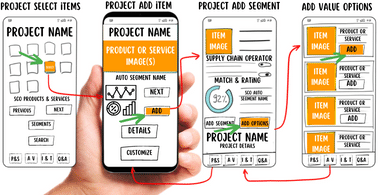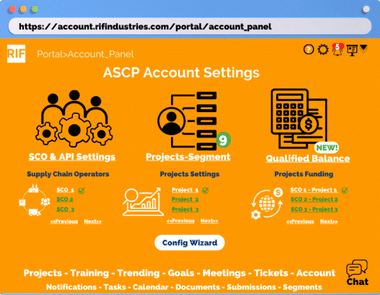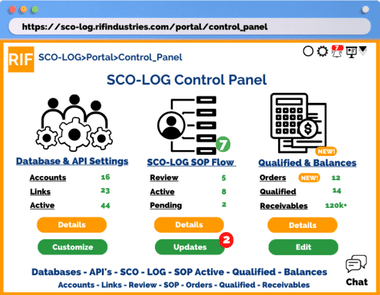
INDUSTRY OR VERTICAL SUGGESTIONS: Aerospace (aircraft manufacturing) | Agriculture | Livestock | Fishing | Timber | Tobacco | Meat & Dairy | Chemical manufacturing | Pharmaceuticals research | Computers | Software Peripherals, repair, retail | Construction | Defense | Preschools and daycares | Education | Primary, Secondary, & Tertiary higher Education | Vocational Education | Special Education | Alternative home or cyber Education | Energy (production, distribution) | Electrical Power | Petroleum oil | Coal | Renewable sustainable, alternative | Entertainment | Amusement Parks | Animation | Circus | Event Management | Film | Game Manufacturing | Media | Music | Shops, toys, paraphernalia | Sports Management and Event Promotion | Talent Agency | Theatre Production | Financial | Banks and Credit Unions | Insurance | Accountancy | Stock Brokerages | Investment Funds | Food | Agriculture crops, livestock, seafood, etc | Fruit Production horticulture | Manufacturing agrichemicals | Food Processing | Grocery markets and retail | Foodservice catering, restaurants, cafeterias | Food Technology research and development | Health Care | Hospitality | Travel | Information | Manufacturing | Transportation Vehicles (Cars, Trucks, SUV, Commercial) | End Products | Raw Materials | Machining | Mass Media | Broadcasting | News | Publishing | Telecommunications | Transport | Water | Drinking Water residential, commercial, industrial | Wastewater (sewage treatment)
The possibilities are endless...
"Industry Verticals" to create a business instantly...
About Maynard L. Dokken - Steps Wizard to Successful IP Future

A Different Approach | A New Market
The model holds true as Gartner and EY Research reveal, we had the future in our hands in 2009. The vision is an option for a forward facing market solution. Key players in the global supply chain management market including SAP SE, Oracle, The Descartes Systems Group, Infor, IBM, Manhattan Associates, and Logility among others have dominance. We are very different yet as global or more.
A simple solution, supply chains that changed their reliance on centralized entities such as conglomerates. Centralized models that could easily cause stresses on commerce and ultimately the economy in the event operators were impaired by factors unrelated to their industry, vertical, product or service.

Supply Chain Projects, Segement & Add Value
The model is designed to work in a simple 4 step process to add segments to the supply chain project.
- Create Project Profile
- Add Segments
- Complete Knowledge Profile
- Submit for Quote

Advanced Supply Chain Portal ("ASCP")
The Portal has been displayed in a Desktop platform most users will likely use for these actions.
The major components displayed are Projects & Segment Management as well Wizards for the Qualification Process.

Operators - Account Settings SCO/LOG, Projects, Segments, Balances
In the “Accounts” section of the Advanced Supply Chain Portal (“ASCP”) the backend focuses on Management of the connection to Supply Chain Operators (“SCO”). Wizards with simple step-by-step and “Update All” functions make it as easy as any multi selection product online.

Repository Model & Architecture
The "Four Components" of the RIF Public & Private Repository are:
- SCO/LOG Best Practices with SOP Integration
- Account Database API Connect with SDK
- Remote Database Creation
- Real Time Public Access to Supply Chain Status
Finish What We Started
Ahead of the curve going towards automation, the digital supply chain twin, analytics everywhere, open source security mesh, ecosystem collaboration and sustainability. We can become the leaders again.
Once the second in “Order of Relief” or recovery of damages for Maynard L. Dokken has commenced either with Counsel retained and/or related actions started by RIFIndustries, the vision and work to replace the current outdated model will re-start. We are ready to complete the “Next Generation” supply chain model. As they say earlier is better!

Step 1: Idea
The starting point is an idea, a vision, an architecture, the "Intellectual Property" that may be unique and could be valuable if protected. Click here...
Step 2: Protect
Is the idea unique? If it is you need to decide how to create a framework to protect the idea. Click here...

Purchase Product
Our first step was purchasing the base product. The next step processing the material and delivering the value add product.
Add Value
This is a critical piece of any business. Adding value. In the first stage of the project was emulating the Alibaba model with a more automated structure to take the complexity out of the process. Much like aggregate vendors process material an online twist with options selected by the purchaser. Then sorting, breaking up and processing material into an add value product.

Value Add Online Portal
Next Step was the development of an automated online value add portal to replace the Alibaba model. A more complete picture of the supply chain process and levels of stress with warning colors and reviews from verified sources.
